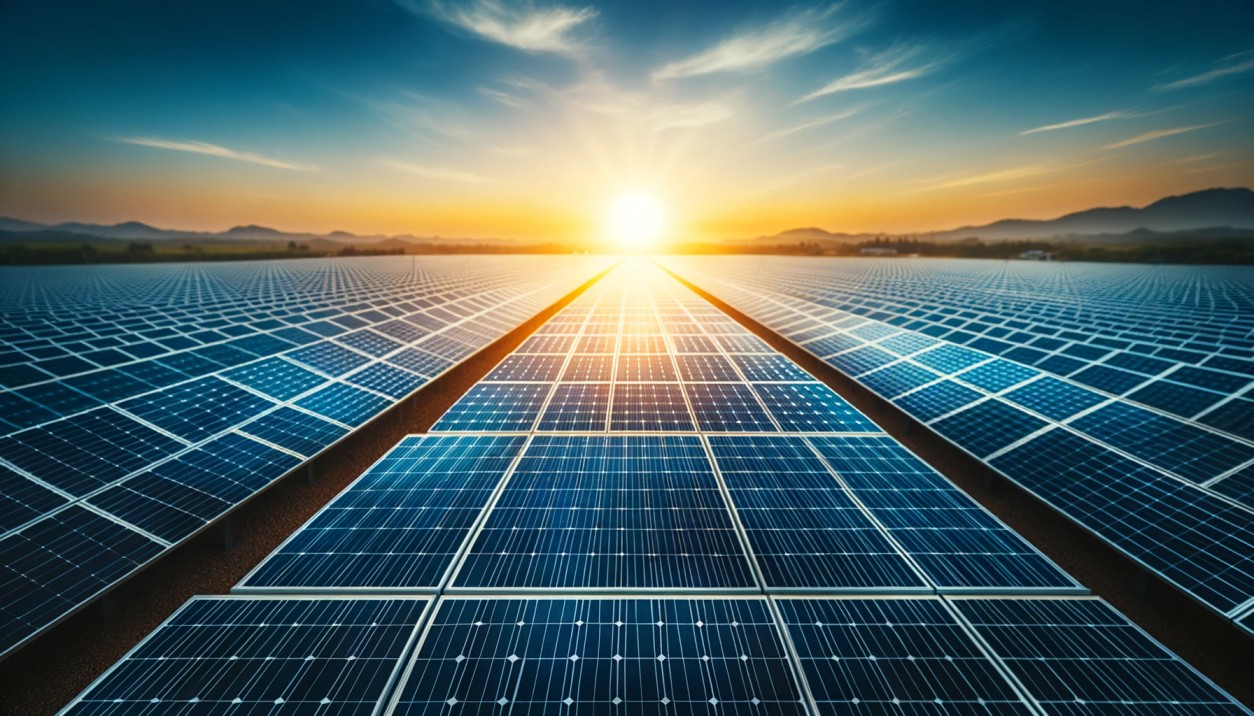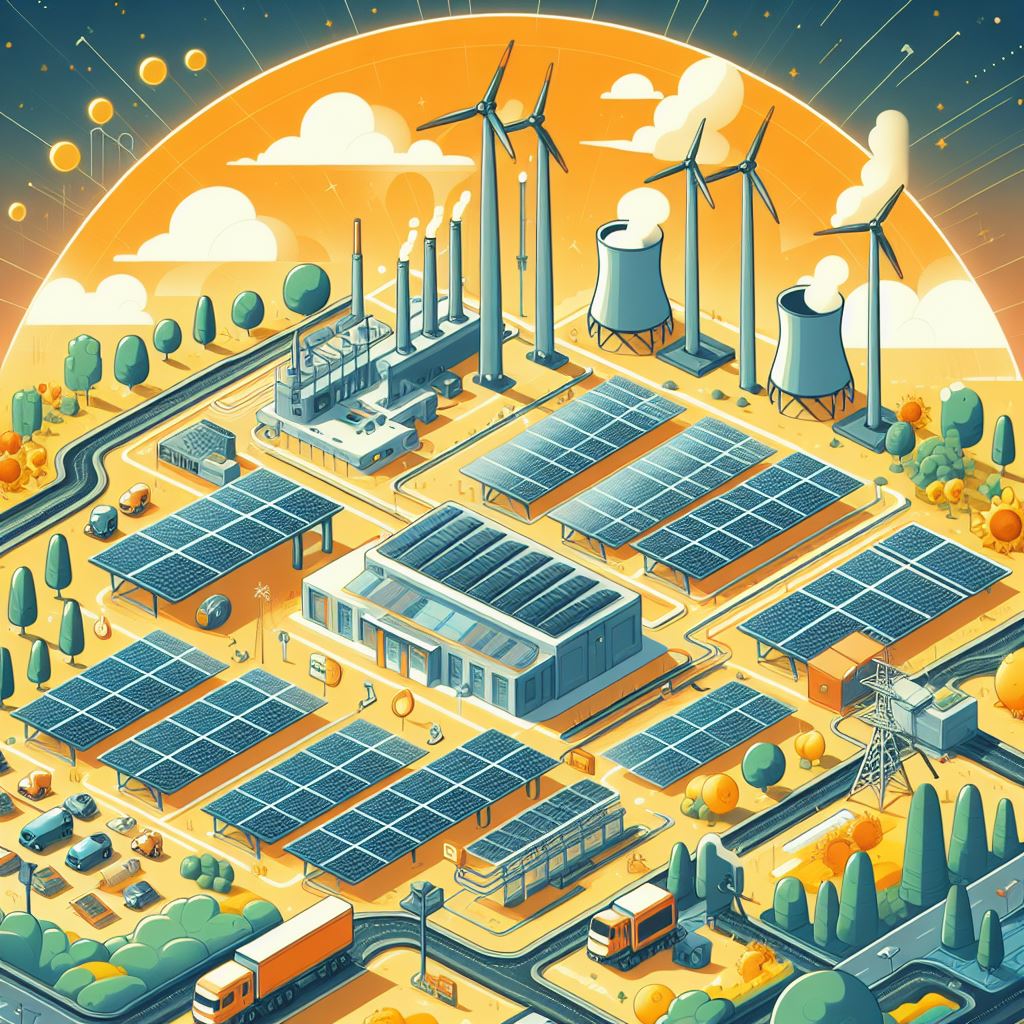The Growth of Solar Farms Fueled by Cutting-Edge Innovations
As solar technology continues to advance rapidly in solar farm technology through innovations like solar tracking systems, improved solar inverters, and more efficient photovoltaic modules, utility-scale solar farms are competing with fossil fuels more viably than ever before. Sophisticated solar pilot projects across the American Southwest are showcasing how the latest solar tech advancements, like smarter MLPE inverters and dual-axis trackers, can substantially boost solar farm productivity and level up cost savings.
Major states have set big 2030 targets for solar farm expansions, with California, Florida, New York and Texas aiming to install up to 20 gigawatts of new solar capacity apiece over the next few years. Paired with solar panel efficiency improving beyond 23% and integrated storage capabilities to stabilise the grid, the latest solar innovations are primed to transform solar farms into the world’s leading renewable energy source and facilitate energy independence through clean, decentralised power generation.
This article will analyse some of the most impactful recent solar innovations in tracking systems, inverters, and photovoltaic modules helping enable the rapid growth of high-tech solar farms while accelerating climate tech adoption globally. We’ll also explore emerging innovations on the horizon that may further solar’s dominance over fossil fuel electricity generation.
Read more: How Solar Farms Work: Explaining Photovoltaic Power Stations
Solar Tracking Technology: How Dual-Axis Systems Maximize Solar Farm Productivity
One of the most impactful innovations advancing utility-scale solar farms is sophisticated solar tracking technology. Solar tracking enables panels to follow the sun throughout the day, dynamically adjusting to optimize angle alignment for prime sunlight capture. This maximizes solar absorption and significantly boosts solar array productivity compared to fixed-position systems.
According to NexTracker’s 2021 solar pilot program, implementing advanced dual-axis trackers led to a 34% gain in annual energy generation compared to fixed racking at a 1-gigawatt solar farm in California’s Central Valley. With PV panel degradation factored in over 30 years, NexTracker estimates their trackers yield at least 30% more lifetime energy than fixed rack alternatives at the same site.
So how exactly does solar tracking work to enhance solar farm performance? What are some key types of solar tracking systems leading this high-tech trend?

What is Solar Tracking and How Does it Work?
Solar tracking systems orient panels to follow the sun as it moves throughout the day. By continuously optimizing the angle that solar modules face the sun, more direct sunlight is captured allowing for significantly more solar electricity generation.
Single-Axis Solar Tracking: Single-axis trackers have horizontal rows that move together on a single axis (typically north-south). This allows the panels to tilt east to west at the optimal angle as the sun traverses the sky. Single-axis trackers generate around 25% more output than stationary racking.
Dual-Axis Solar Tracking: Dual-axis trackers have panels mounted on structures that shift along both a horizontal and vertical axis to directly face the sun all day. This dual-axis motion enables up to a 40% gain in energy production since it maximizes direct irradiation on the PV surface at all times. However, the increased mechanical complexity comes at a higher hardware cost.
Tracking capabilities can be hydraulic, motorized or passively solar powered. Leading providers like Array Technologies and NexTracker combine robust mechanical engineering with advanced self-learning algorithms to get the most from their solar tracking systems.
Smarter Solar Inverters Drive Improved Performance
Inverters play a critical role in solar energy systems by converting the DC power generated by solar photovoltaic panels into alternating AC current that can be fed into the electrical grid. As solar farms scale up to hundreds of megawatts in capacity, inverter technology has had to advance to manage all that distributed energy flow.
How Newer Smart Inverters Outperform Traditional Models
Older centralized string inverters linked to large banks of solar modules led to significant challenges with monitoring, troubleshooting, and lost yields if any panel underperformed. By shifting to newer module-level power electronics (MLPE) featuring integrated microinverters or power optimizers connected to each panel, large-scale solar sites gain numerous efficiency and output benefits.
Key advantages of smarter MLPE solar inverters include:
- Real-time panel-level monitoring spotting faults quickly
- Ability to maximize and tune wattage from each panel
- Automatic shutdown during grid or environmental events
- Significant O&M cost reductions over 20+ year lifespan
Solar analysts predict the MLPE inverter market serving solar farms will expand at an annualized rate of over 25% through 2030. Top solar manufacturers making major investments in smarter inverter R&D include Enphase, SolarEdge and Sungrow.
Case Study: Sungrow’s String Inverter Replacement Yields 6% Gain
One real-world example demonstrating the output and efficiency gains newer inverter technology enables comes from BrightNight’s recent retrofit of a 150-megawatt solar farm in Arizona originally built in 2014. By replacing outdated central string inverters with Sungrow’s SG3125FX centralized MLPE solution, modeled results over 12 months showed:
- 6% gain in annual energy production amounting to over 3 GWh more solar electricity generation
- 9.2% lower operation and maintenance costs
- 7.4% reduction in the levelized cost per kWh
Sungrow’s advanced smart inverter platform helped maximize yields from the existing solar modules and will enhance performance over the system’s remaining 20 year lifecycle. BrightNight’s Chief Technology Officer called the MLPE retrofit “a no-brainer decision delivering considerable upside.” He added that they are now looking into similar inverter upgrades across another 300 megawatts of projects.
Steadily Improving Solar Cell & PV Panel Efficiency
While flashier innovations like advanced solar trackers and smarter inverters grab attention, less glamorous improvements happening at the module level play an equally forceful role advancing solar farm capabilities. Through extensive materials science research over the past decade, solar photovoltaic manufacturers continue to push cell efficiency and panel wattage higher each year. This directly boosts the productivity of solar farm investments leveraging the upgraded models.
Solar Cell Efficiency Improvements Outpacing Historical Trends
Since solar modules represent up to 35-40% of the upfront capital costs for utility-scale arrays, incremental solar cell efficiency gains making panels more productive are hugely impactful. Commercially available polysilicon cells have risen from 15-16% just a few years ago up to 23% efficiency today.
That climb is sharply outpacing past rates of efficiency improvements. With innovations like multi-layer tandem cells achieving over 30% efficiency already demonstrated in labs, analysts forecast commercial panels breaking 26% within 5 years as new high-efficiency module assembly lines come online.
Location-Specific Solar Panel Innovations
Regional solar trends provide additional opportunities to tailor panels for more optimal generation. For example, the moist, humid climates common where large-scale solar is booming in Florida pose risks of corrosion and mold build up. Startups are developing anti-corrosive solar panel coatings and hydrophobic treatments specifically for high humidity regions to maintain peak efficiency.
Areas prone to lots of dust and sand such as the deserts of the Southwest can also experience reduced output as particles accumulate on panels over time. Researchers are testing new low-cost self-cleaning module coverings that can brush off dust whenever dew forms in early dawn hours.Specialized solutions can create meaningful project upside.
Policies and incentives aimed at growing domestic solar manufacturing are also beginning to bear fruit. For instance, a new $285 million module assembly facility just broke ground in Tennessee that will supply 1.35+ gigawatts of locally produced solar panels annually to southeast projects over the next four years. Such investments help improve supply chain resilience, create jobs, and boost the viability of solar farms competing regionally.

The Bright Horizon: What’s Next for Solar Technology Innovations
The solar advances unlocking substantial efficiency gains in tracking systems, inverters, and PV modules over the last 5 years have already catalyzed massive growth in utility-scale solar farms. With global solar capacity now exceeding 1,000 gigawatts and projected to multiply over 3X by 2030, what emerging innovations could spur the next wave of disruptive improvements?
Integrated Storage and Solar Optimization AI
As solar penetration rises across grids from California to Australia, work is underway to better optimize intermittency through integrated storage and advanced grid management aided by artificial intelligence. Startups are rolling out fully containerized solar+storage solutions combining high-efficiency panels (27%+) with new lithium ion formulations tailored to solar charging/discharging cycles.
Smarter AI algorithms balancing solar generation forecasts with predictive demand patterns are also coming online across entire regional distribution networks. These emerging capabilities provide a blueprint for maintaining renewable energy stability as more coal and nuclear plants go offline.
Agrivoltaics: Co-Locating Solar Farms and Agriculture
Another pioneering concept gaining traction is “agrivoltaics”, the strategic co-location of solar infrastructure and agricultural operations on the same plots of land. Studies have shown certain crops thriving under partially shaded PV canopies that also promote water retention while generating significant additional revenue from the power sold.
Companies like Eden Renewables have solar farms cropping up in rural patches from Oregon to Mississippi that conservatively produce over 300 barrels of biodiesel per megawatt of solar capacity thanks to their dual-usemodel. This innovation proves solar need not compete for land use and can help diversify struggling heartland economies.

Solar Technology Primed to Lead the Renewable Energy Revolution
Thanks to sustained technology advancements in tracking, inverters, module efficiency and integrated storage, utility-scale solar farms are reaching unprecedented levels of cost-competitiveness, productivity and grid stability. The latest innovations highlighted across the Southwest’s massive solar pilot projects provide a blueprint for how solar can continue disrupting entrenched power paradigms.
Dual-axis trackers and smarter MLPE inverters are already being deployed at record rates while new high-efficiency panel formulations are just reaching commercialization. Paired with cutting-edge solar optimization algorithms and increased on-site storage capabilities, the pieces are falling into place for a true solar-led transformation of electricity generation within this decade.
Of course, progress cannot stall in other critical areas like streamlining permitting bureaucracies, upgrading regional transmission infrastructure and training adequate solar construction workforces if global clean energy independence is to be achieved. But the innovation trends clearly show solar technology itself is no longer the bottleneck and VCs along with public-private partnerships stand ready to scale the most promising breakthroughs.
With so many economic and climate imperatives aligned, the clean energy transition led by increasingly high-tech solar farms is inevitable. The only question that remains is how swiftly solar can scale to make the 2020s the decisive decade where renewables displace fossil fuel dominance for good.















